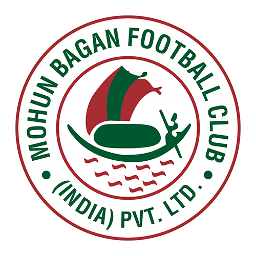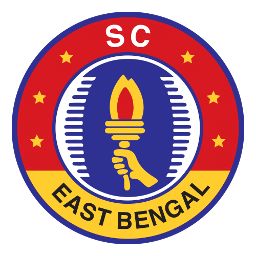- Kingsley Obumneme - 39'
Derby turnout shows there's still life in Kolkata clubs
Following Mohun Bagan's derby win against East Bengal, thanks to Kingsley Obumneme's first-half header, the Salt Lake stadium could be neatly divided in two halves. One part was a heaving, throbbing, crying mass of humanity in green and maroon interchangeably screaming 'Joy Bagan' and hurling insults at their rivals. The other was largely deserted, save for a few holdouts - some painted in red and gold sprawled listlessly on a seat.
"We have won the derby, we haven't won the league," Bagan coach Sanjoy Sen cautioned after the game. But just a few minutes earlier, Sen's players appeared to have forgotten that advice just for a bit. After only their second game of the I-League season, they pressed their head to the turf, sank to their knees and then did a lap of honour around the ground.
But even the most avowed cynic would have to be swayed if only for the moment. This game had been played under a cloud. It centred solely on the viability of the two Kolkata clubs and the league in which they were playing. Where they had cast their century-old legacies as a shield from criticism of any sort, they were now being branded as dodos. They wallowed in their own importance even as Indian football appeared to head determinedly in a glitzy new path.
My view: Mohun Bagan Goal #MBvKEB #KolkataDerby #HeroILeague #followtheraver pic.twitter.com/o3yxjb7woG
- Arjun Pandit (@Arjun599) December 3, 2017
Bagan, who had once 'chosen' not to be in the Indian Super League, now found themselves forced to convince their star striker Sony Norde that they eventually would, just to keep him in their team. The derby itself was being played in the middle of the afternoon, instead of an evening slot, when the best TV audience would watch an ISL game.
Those bigger questions might still remain unanswered. Yet what Sunday afternoon crowd proved, is that at least in the stands, there is plenty of life in the two old clubs and there are some things the best marketing brains and vast amounts of cash cannot match.
If you have never been to a Kolkata derby game, it takes some getting used to. Some 64,000 spectators were at the Salt Lake Stadium on Sunday. The banners they unfurled said where all they had come from: 'Budge Budge', 'Balichak' and 'Medinipur' were all there. Many had come down, as is the norm, on the backs of trucks blowing horns, chanting and making rude gestures at rival supporters. Others arrived simply bearing flags or at least in one case a giant maroon and green prawn.
Some warned that violence was the most logical prediction to make for a Kolkata derby, but the fans and their ribbing was for the most part good-natured. A surprisingly large percentage of the crowd was made up of women and children, something that might have surprised I-League CEO Sunanda Dhar in his childhood. "When we were growing up, the derby meant violence. Of not being a place for women and children," he recalled.
The recent U-17 World Cup appears to have changed a few mindsets. "The refurbishing of the ground has made a difference. The toilets are clean and you aren't so worried about bringing your family to the stadium. A lot of the younger fans will probably carry on this tradition," says Dhar.
It wasn't just first-time spectators who were overwhelmed by the derby. Players were too. "I've never seen this crowd before. It increased the feeling that we have to fight for them," goalscorer Kingsley marvelled after the game.
For Dhar, who faces the unenviable task of promoting the I-League against the marketing juggernaut of the ISL, games like the Kolkata derby are a godsend. The passions the game generates are the outcome of nearly a century of bitter rivalry and simply impossible to replicate by an outfit that's been around for a few flash years.
"In Kolkata you are either born an East Bengal or a Mohun Bagan supporter. For a new club it is difficult to match that. Regardless of what the situation is, Mohun Bagan versus East Bengal is the biggest club game for India. It's a tradition that is going on for the last hundred years and it is something that could go on for the next hundred," he says.
Game Information
Indian I-League Standings
| Team | GP | W | D | L | GD | P |
|---|---|---|---|---|---|---|
| Aizawl FC | 0 | 0 | 0 | 0 | 0 | 0 |
| Churchill Brothers | 0 | 0 | 0 | 0 | 0 | 0 |
| Delhi FC | 0 | 0 | 0 | 0 | 0 | 0 |
| Dempo Sports Club | 0 | 0 | 0 | 0 | 0 | 0 |
| Gokulam Kerala FC | 0 | 0 | 0 | 0 | 0 | 0 |
| Inter Kashi | 0 | 0 | 0 | 0 | 0 | 0 |
| Namdhari | 0 | 0 | 0 | 0 | 0 | 0 |
| Rajasthan United | 0 | 0 | 0 | 0 | 0 | 0 |
| Real Kashmir | 0 | 0 | 0 | 0 | 0 | 0 |
| SC Bengaluru | 0 | 0 | 0 | 0 | 0 | 0 |
| Shillong Lajong | 0 | 0 | 0 | 0 | 0 | 0 |
| Sreenidi Deccan | 0 | 0 | 0 | 0 | 0 | 0 |

